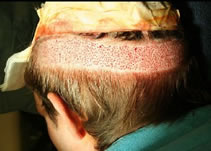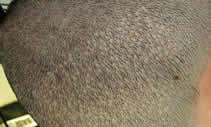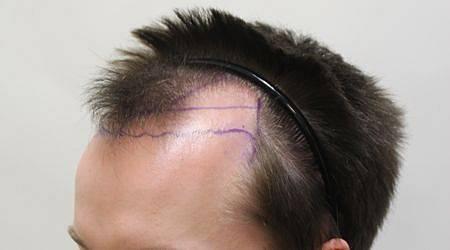
In 2002, veteran hair restoration surgeons Dr. William Rassman and Dr. Robert Bernstein published an article describing a new type of hair transplant surgery. In the editorial, Drs. Rassman and Bernstein outlined what they called the “FOX,” or follicular unit extraction procedure. Unlike the traditional strip harvesting technique also known as follicular unit strip surgery or FUSS where tissue containing hair follicles is removed, dissected, and implanted into the balding scalp; follicular unit excision or FUE involves the direct removal of individual follicular units from the universal donor region followed by implantation.
This new FUE hair transplant procedure represented great potential to minimize the appearance of donor area scarring - an area of great concern for many patients. However, in the beginning, hair growth and optimal results were often sacrificed and larger FUE punch tools frequently led to obvious circular scarring in the donor area. Thus, In order to minimize transection (an accidental slicing of the hair follicle causing irreparable damage) to follicular units and improve overall growth yield, expert physicians were required to continually improve on the FUE technique. This led many FUE practitioners to innovate a variety of new and more effective tools for extracting and placing follicular units.
For a comprehensive discussion about FUE hair transplant extraction devices, visit "Manual versus Motorized FUE Hair Transplant Extraction Devices"

Evolution of Follicular Unit Extraction
From its humble beginnings in the late 1990s and early 2000s, FUE hair transplant surgery has undergone a rapid and impressive evolution. According to Coalition member and FUE expert Dr. Alan Feller, FUE has evolved from a niche, “cottage industry” procedure to a widespread, mainstream therapy. It’s important to note that this evolution involved vast amounts of innovation and improvement, and it was mainly driven by patient demand.
FUE has evolved from a scarcely practiced technique to a procedure representing approximately 40% of all hair transplant surgeries performed today. However, in order to evolve from an unproven, specialized technique to a widely accepted form of hair transplant surgery, FUE had to transform in the following ways:
- First, FUE needed to demonstrate decreased transection rates and overall hair growth yields close to or equivalent to the strip harvesting (FUSS) method.
- Second, FUE hair transplant sessions needed to increase in size. When Dr. William Rassman first started experimenting with FUE in the mid 1990s, extraction was difficult and unpredictable and session sizes included around 20 grafts. Since then, physicians have greatly increased session sizes while keeping transection rates low and final yields high. Today, physicians can extract upwards of 1,000 grafts per hour with motorized devices, and implant thousands of grafts in a single session which is often performed over several consecutive days.
- Third, FUE needed to evolve from a procedure only suited for younger, Caucasian males with minor hair loss to a legitimate option for a large portion of hair loss sufferers. Thanks to a collaboration between veteran patients demanding only the very best and dedicated hair restoration physicians for innovating improved extraction devices and techniques, FUE hair transplant surgery is now an option for advanced balding patients, female hair loss sufferers, and individuals with ethnic hair when appropriate.
FUE Hair Transplant Surgery Today
Today, follicular unit excision is a viable procedure for a large number of hair loss sufferers. Advancements in the technique have made FUE a good option for a variety of patients. Disadvantages such as increased cost, multiple day "sessions", and the possibility of decreased growth yield may cause some concern. However, for individuals who are seeking quality hair restoration without the linear scar associated with the strip harvesting technique, FUE hair transplantation has become a serious option.
Where to find an FUE Hair Restoration Physician?
Many hair restoration physicians recommended by this website perform advanced follicular unit excision with excellent results.











